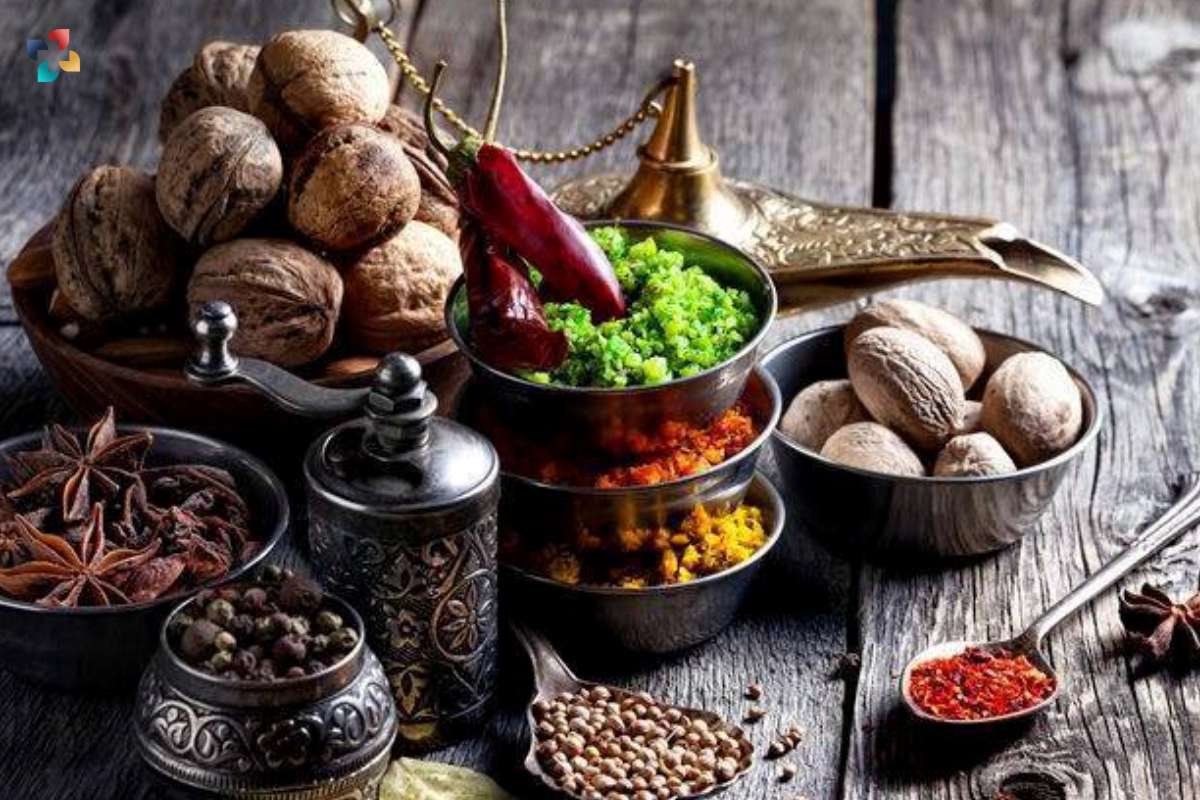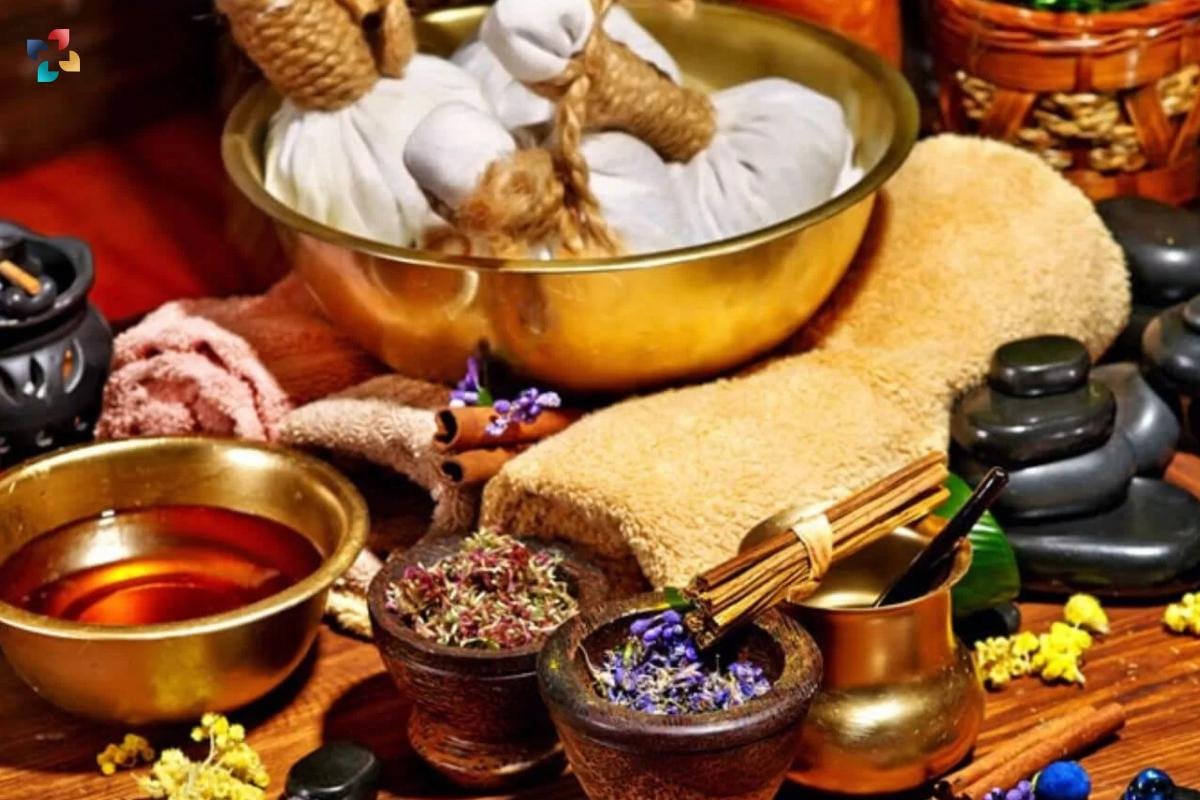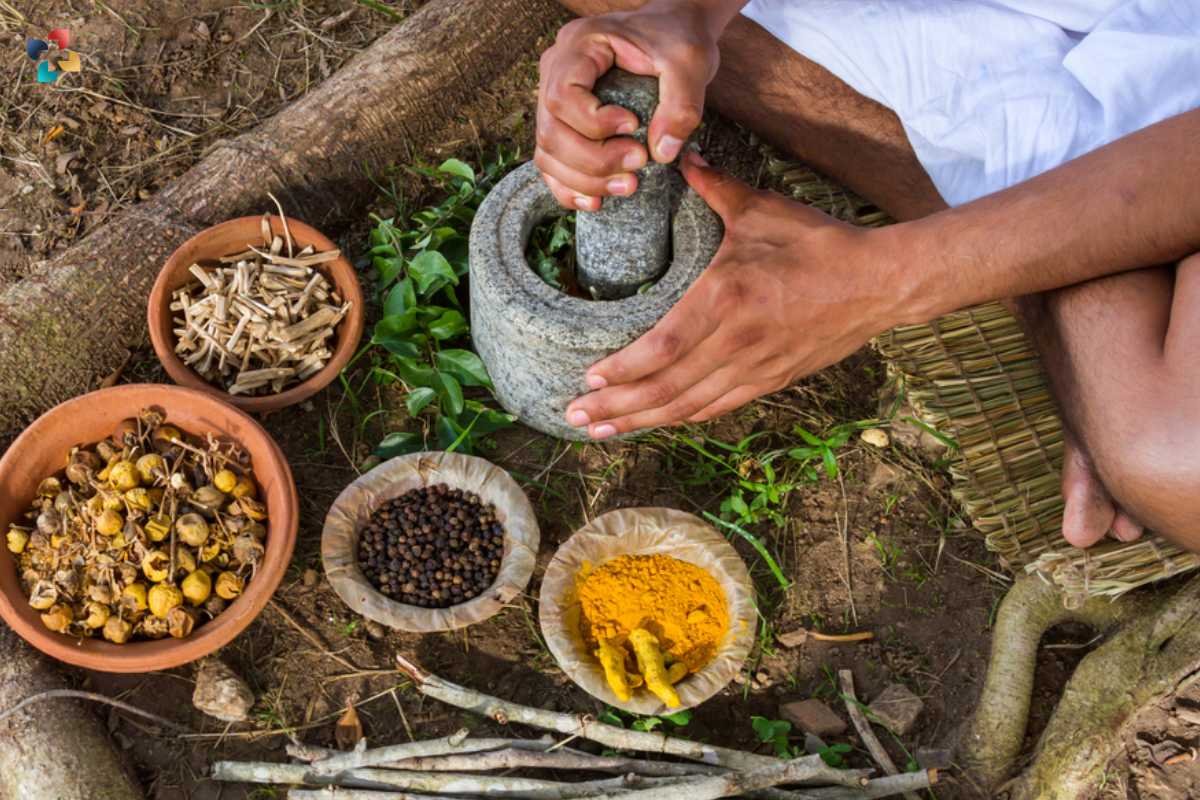You must have heard that drinking warm water with 3-4 drops of lemon juice every morning can aid in weight loss!
Yes. You can start your weight loss journey with a drill as simple as this. Along with weight loss, it also helps detoxify your digestive system and restore lost fluids to rehydrate your body. Like this, many simple medicinal practices can help you heal seamlessly without any side effects. And if you do some research, you will find that a majority of these practices have their roots in Ayurveda.
Regarded as one of the oldest medicinal practices, the worldwide popularity of Ayurveda has increased multiple folds over the past few decades. Reports show that the demand for Ayurvedic medicine could reach $6 billion by 2026. However, despite its increasing popularity, there is still a large group that doesn’t know much about Ayurveda and its benefits. If you are also one of them, this blog is for you.
In this blog, we’ll shed some light on what exactly is Ayurveda and how it is still a relevant medicinal practice.
To begin, we’ll see “What is Ayurveda?”
Deemed as a 3000-year-old practice, Ayurveda has its origins in India. The word ‘Ayurveda’ is acquired from two Sanskrit words Ayur (meaning life) and Veda (meaning science or knowledge). So literally, it translates to the science of life. Ayurveda works on the notion that the root cause of a disease is stress or imbalance in someone’s consciousness. And according to the disease, Ayurveda assists with natural therapies and subtle lifestyle changes to help the person maintain a perfect balance between body, mind, and the environment.

Typically, Ayurveda is classified into two types i.e. Maharishi and traditional. Maharishi is another version of traditional Ayurveda based on the translated texts by Maharishi Mahesh Yogi. However, there are many things common in both these types. Both types of Ayurvedic practitioners advocate the usage of herbs, believe that diseases rise due to an imbalance in doshas (basic types of energy), and often use common remedies to treat different diseases.
How does Ayurveda work?
According to Ayurveda, each person has a distinct energy pattern known as doshas. These energy patterns combine a person’s unique characteristics—physical, mental, or emotional. Here are the three types of doshas:
- Vata: Vata is Ayurveda practitioners who believe this to be the strongest of the three doshas. Vata is said to control the functions of your mind from breathing and heart functioning to even getting rid of the waste through the intestine. Several habits like staying up too late, grief, eating quickly after a meal, etc. can disrupt Vata. If Vata is dominant in your body, you are likely to have skin problems, asthma, anxiety, heart diseases, etc. However, if it is in balance, it can aid your creativity, flexibility, and swiftness in action.
- Pitta: Pitta is generally translated as fire. This energy is said to control your metabolism, digestion, and some hormones related to your appetite. The imbalance of Pitta can cause anger and over-excitement. This can lead you towards rash decisions and self-destructive behavior. On the other hand, if your pitta is in balance, it can help you in leadership. You become more competitive, confident, willing, and focused.
- Kapha: Kapha is the energy that is responsible for the growth of the body. It is the densest dosha and is known for moisturizing the skin, supplying water to all parts of the body, and maintaining the immune system. Kapha imbalance can cause excessive weight gain, a tendency to hold onto things, disinterest in new activities, more fatigue, etc. However, balanced Kapha can make you comfortable to stick to a routine, get emotionally involved in things, etc.

Now if you are wondering whether you have vata, pitta, or kapha energy, you might be wrong. Because everyone has all these energies, it’s just that one or two of these are dominant. Remember that your daily routine—sleep cycle, food timings, stress, etc.—can affect these doshas big time. And the disturbance in them further develops into diseases.
Ayurvedic treatments bring these doshas back into balance and reduce the probable risk and impacts of the disease. Stress relief is one of the techniques Ayurveda uses to cure people. That is why meditation has significant importance in Ayurveda. Many studies over the years have shown that meditation is a proven way to reduce stress. Moreover, Ayurvedic treatments focus on regulating blood pressure and cholesterol to slow the aging process as well as speed up recovery.
Components of an Ayurvedic Treatment
As mentioned above, the Ayurvedic treatment mainly focuses on balancing the doshas. When you visit an Ayurveda practitioner for the first time, he will check your medical history, pulse rate, as well as examine your abdomen, tongue, nails, eyes, skin, etc. He will ask you about your daily routine and lifestyle, emphasizing your diet, surroundings, daily schedule, etc. Based on these questions and the following ways, he will diagnose the disease.

- Naadi (pulse)
- Mootra (urine)
- Mala (stool)
- Jivha (tongue)
- Shabda (speech)
- Sparsha (touch)
- Druk (vision)
- Akruti (appearance)
After the disease is diagnosed correctly, one of the following therapies is used for Ayurvedic treatment.
- Dietary Changes:
You must have heard a popular saying, “You are what you eat.” Ayurveda and the treatments alike also focus heavily on diet and its importance. An Ayurvedic practitioner will always recommend you to have a balanced diet and include all the necessary ingredients like cereals, green vegetables, fluids, etc. based on the type of disease.
- Herbal Medicines:
Historically, natural herbs have proved to be effective over several allopathic drugs. Ayurveda promotes the usage of herbs to cure diseases organically and permanently. A majority of Ayurvedic medicines have their origins in such herbs that heal disease from their roots.
- Ayurvedic Acupuncture:
Ayurvedic acupuncture is a process that involves the usage of needles at various pain points or acupoints in the body to balance the prana (life force). This type of acupuncture is also called marmacupuncture. The needles that are penetrated in the body can be normal needles or medicated needles.
- Massage:
The effectiveness of physical massages is something we all know. Today, there is an abundance of different types of massages and the massage parlor business is on boom presently. In Ayurveda, too, different massage techniques can precisely focus on the pain and help you heal permanently rather than quickly.

- Meditation:
Sitting calmly in a serene place for a while can give you the peace that no expensive therapy can offer. Meditation is a proven way to enhance your mental well-being and increase your emotional intelligence as well. It not only aids in cleansing your cluttered mind but also helps you instill a positive attitude.
- Breathing Exercises:
Just like meditation, breathing exercises also focus on healing you from within. With specific, rhythmic breathing patterns, these exercises help you achieve stability in your thoughts. If you are into Ayurveda, you must have heard about pranayama, a set of different breathing techniques you can perform for physical as well as mental healing.
- Panchkarma:
The process of Panchkarma (translated as five actions) has a lot of importance in Ayurveda. It is a specialized technique consisting of five processes—Vamana (Emesis), Virechana (Therapeutic purgation), Nasya (Nasal Medication), Anuvasana Basti (Medicated oil enima), and Niruha Basti (Herbal decoction enema). All these processes help in cleansing and detoxifying the body to percolate a relaxing and calming effect.
- Sound Therapy (Including mantras):
If you have ever attended a Hindu wedding, you must have heard a set of mantras that are chanted as an important ritual. Various studies over time have shown that the sound waves created during mantra chanting have a positive impact on the minds. The sound waves at certain frequencies do all the magic.
- Yoga:
Last but not least; yoga is one of the most important treatments in medicine. The benefits of yoga are well-known and we have recently started recognizing the benefits by celebrating International Yoga Day on the 21st of July every year. And with more people realizing and reaping its advantages, it is only expected to grow in importance over the near future.

All these aforementioned treatments can treat a myriad of diseases ranging from anxiety, asthma, arthritis, and digestive problems, to Eczema, high blood pressure, high cholesterol levels, rheumatoid arthritis, and stress.
These were the basic components and treatments in Ayurveda. But this is not the only thing you need to know. As the popularity of Ayurveda has increased over time, several rumors and myths surrounding the treatment have also been developed. Let’s bust some of these myths with actual facts.
Debunking 4 Common Myths about Ayurveda
1. Ayurvedic treatments take a long time to show an impact
This is probably one of the most common myths you must have heard. People that don’t go for Ayurveda often give this as the reason. Some Ayurvedic treatments do take time to show their effect, however, it is not the case every time. Moreover, if you compare Ayurveda with Allopathic treatments, you will find that the former has fewer to no disadvantages or side effects, which is good in the long run.
2. Ayurveda is only for vegetarians
You might well have heard someone saying you should quit the non-vegetarian diet if you are following Ayurveda, but it is a misunderstanding. Of course, Ayurveda encourages and advocates a vegetarian diet. However, it is not a rule. Do remember that non-vegetarian food is not at all prohibited in Ayurveda.
3. Ayurvedic medicines do not have side effects
This is a misconception people who fondly follow Ayurveda create. If we look closely, Ayurvedic medicines have lesser side effects as compared to allopathy or homeopathy. However, some sorts of side effects do exist in these treatments.
4. Only herbs are used in Ayurvedic treatments
Many people think that only herbs are used in Ayurvedic treatments. Many also get confused between Ayurveda and naturopathy. However, there is much more to Ayurveda than only natural herbs and natural treatments. Ayurveda is a large branch that has various concepts. Many times, these techniques can heal you without any medicine as well.

Ayurveda vs. Allopathy: The Longstanding Debate
Although Ayurveda is getting more recognition presently, many people still prefer allopathy over it as it gives quick results. Both have their advantages, applications, and disadvantages as well. And choosing between the two is not about this. It’s just about what suits you and your body. So, analyze your body type and its requirements and decide which way you want to go.
So, this is all we have for you in this blog. To read more interesting content, keep visiting thelifesciencesmagazine.com.











